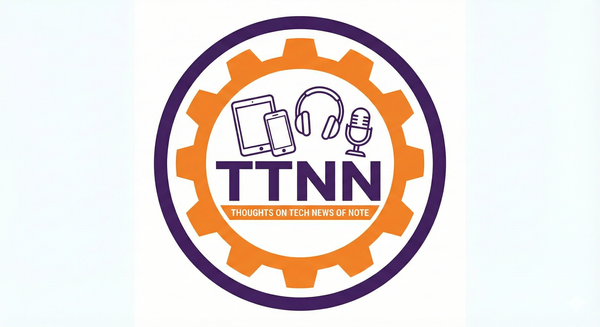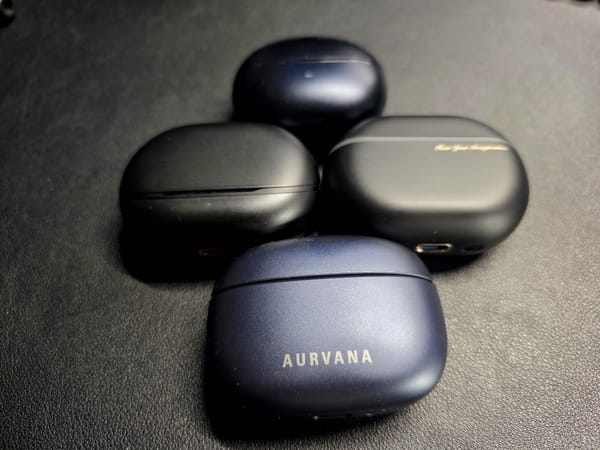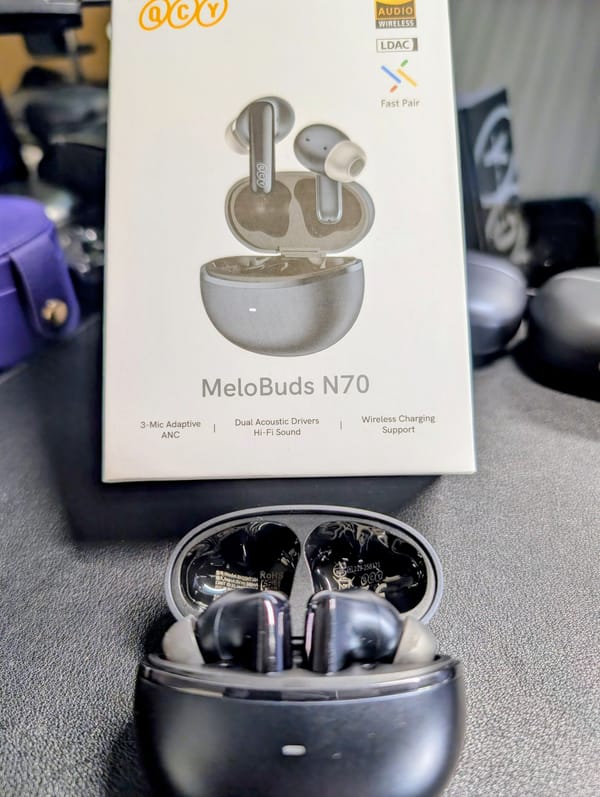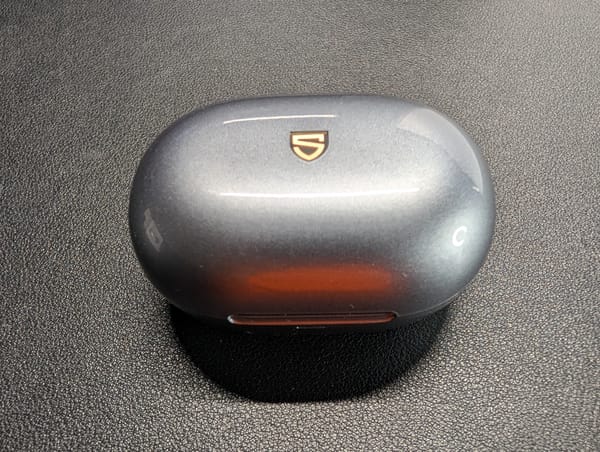Cross-Device Fitness Tracking
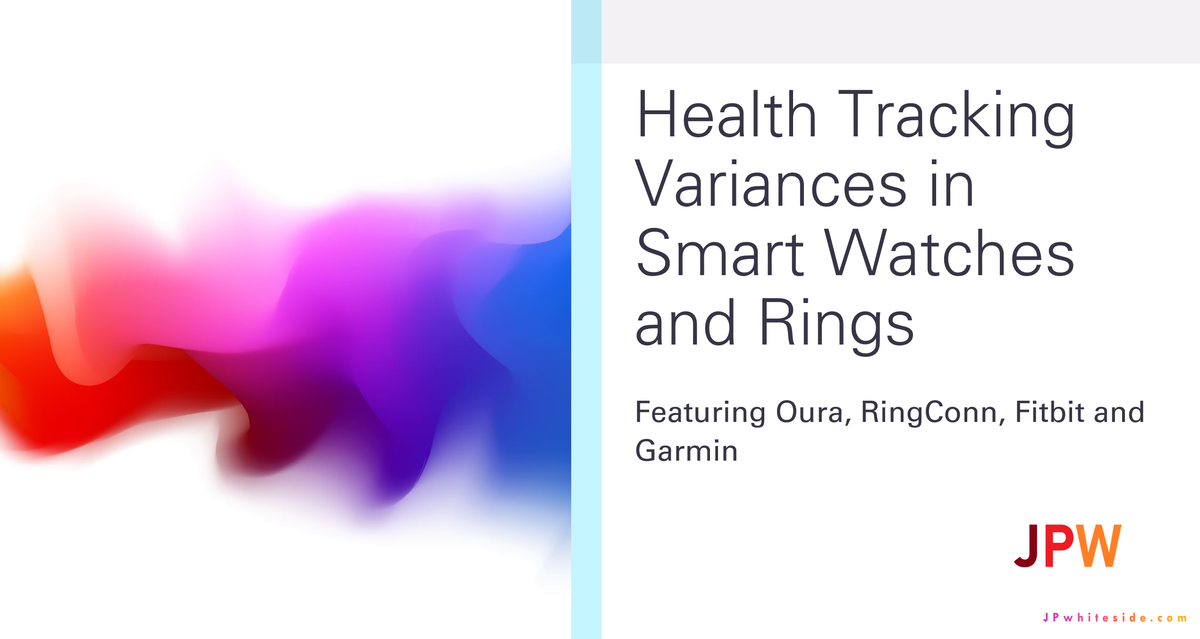
I have been an Oura ring wearer since the 2nd generation. For that ring, I got in early enough that when Oura started charging a subscription fee, I was grandfathered in and did not have to pay. I kept using that ring until its battery life was so terrible that I needed to charge it daily and even then missed some nights of sleep. I did not want to wade into yet another subscription, but at the time, there weren't many serious competitors to Oura on the market. I surely wasn't going to dump even more money into buying a Whoop strap, so I upgraded to the 3rd generation ring. At the same time, I was wearing a Garmin Venu 3. I felt like with the two devices together I was getting a pretty good view of my fitness and general health. I exercise 5-6 days a week, doing HIIT and steady-state cardio along with gym-style and functional weight training. The Garmin is very helpful in tracking my fitness stats and even keeping track of exercises and poundage used during weight training and the ring does very well at sleep and HRV tracking.
But with time, I started to get restless. I loved my Garmin - I had been in the Garmin ecosystem since the Fenix 4 - but I missed having a stronger smartwatch platform. I wanted to be able to control my lights and have easier access to my TOTP authenticator codes. When the Pixel Watch 3 debuted with a larger size, slightly improved battery life, and its smart safety and security features like Safety Check, Emergency SOS, and Car Crash Detection, I was intrigued. I'd used the Android Wear/Wear OS platform in the past and had loved it as a smartwatch operating system but found most watches (except the monster behemoth Suunto 7) did fairly poorly with exercise and health tracking. With Wear OS as its base, plus the power of Fitbit -another platform with which I had extensive experience since the original waistband clip step trackers - here was a watch that could potentially replace my Garmin. I bought the LTE version and fully expected to retire my Garmin.
But that didn't happen. Instead, I found myself wearing two watches and a smart ring on a daily basis because each of them excelled at something that the others did not. Based on testing by YouTube's renowned The Quantified Scientist (www.youtube.com/@TheQuantifiedScientist), I trusted the Oura ring and the Pixel Watch 3 to do a good job with sleep tracking. Garmin devices aren't nearly as good at this yet, although I do believe with the mounting added pressure Garmin will work on this in the coming years. The Pixel watch had the power of Wear OS, so I had more apps and features on my wrist than I was likely to use. The Garmin watch just got access to a basic app like Google Maps this month, and it isn't quite the same as using it on a Wear OS watch. I trust Oura to be better at tracking temperature changes and therefore be better at period tracking and detecting potential oncoming illness. Watches aren't as effective at tracking skin temperature even though almost all of them track this metric. And the Fitbit system, if you pay the yearly fee, has access to exercise videos and some of them are actually pretty good. But more importantly, I don't really have to pay for a Fitbit subscription to get the tracking metrics that are important to me. I'm not seriously invested in the Apple ecosystem as I have only a single iPad Pro, so I have no experience with the fitness features they offer, but I imagine only Apple's ecosystem trumps Fitbit when it comes to access to exercise videos and training classes. I have never liked the look of the Apple Watch and I'm not the slightest bit interested in going back to the iPhone after more than 15 years on Android. I value having choices and options too much.
Well, now armed (sorry, not sorry) with two watches and a ring, I wanted to reduce my reliance on subscriptions. The Oura ring gen 3 was already showing signs of serious battery degradation, so I decided despite its rock-solid reliability in tracking sleep and recovery, I would replace it. I spent a few months researching other rings and had almost settled on the Ultrahuman ring because the caffeine window and presentation of data in its app appealed most to me. But after paying more attention to its accuracy compared to some other rings, I instead opted for the RingConn Gen 2. Its accuracy didn't seem quite up to par with Oura, but it did seem better than Ultrahuman, and the great battery life plus the charging case were perks I couldn't easily ignore, especially when paired with its sale price during Amazon Prime Days. I have been using it alongside my other fitness trackers and for a week, I logged all their stats in a spreadsheet to better see and understand their differences so I can apply the proper amount of weight to each tracked metric for each device. I then uploaded the spreadsheet to Perplexity and CoPilot and asked them to analyze and summarize the results, placing priority on sleep tracking and providing the results in presentation form. Perplexity generally did a better job with its summary and arranging data and insights for the slides.
I place the most importance on sleep tracking, HRV, and resting heart rate (it's my goal to lower it a few more beats but I've come a long way since having lows in the 70s). If it's true that Oura is the most accurate of these 4 devices, RingConn and Fitbit do a pretty good job in general. Most nights they are very close on overall sleep time and reasonably close with the sleep stages, although RingConn does seem to have a bit more variation than Fitbit. Nevertheless, I find them close enough, and again, if The Quantified Scientist's testing is to be trusted, Fitbit's sleep tracking is almost as good as Oura's, and for me, RingConn is close enough.
Note: Slide contents were generated by Perplexity unless otherwise indicated



Garmin’s sleep tracking algorithm doesn’t seem to be as competent as the one used by Oura, Fitibit, or even RingConn in most cases. It consistently misses out on deep sleep and awake times. It does seem to track the most sleep time overall, which led Perplexity to question why its sleep scores were consistenly the lowest among the four devices. But we know that if we aren’t getting enough REM and/or deep sleep on a regular basis, sleep quality and health suffers. Garmin’s scores reflect this reality. RingConn shows more variance in sleep stage tracking, but quite often it’s not far off from Oura and/or Fitbit.
For HRV tracking, I noticed after the very first night that either RingConn is using a different algorithm or method to calculate HRV, or it is just very consistently higher than all the others. But its trends up/down do seem to be acceptably consistent with the others, so I still consider it a good source to evaluate daily changes in HRV. Garmin is actually very good at HRV tracking and is almost always within 1-2 ticks of the Oura ring, so I don't feel like I'm lacking here with the 3 sources to compare. Resting heart rate numbers are also fairly consistent among the four devices, and I didn't notice any variations that gave me enough pause to stop trusting any particular device when it comes to this metric. I tend to believe that the variations noted are because of different measurement points in time or the averaging methods used by each device.
I don't place a lot of value in readiness scores or even the venerated Body Battery that Garmin offers. These scores vary a lot among different devices and to be honest, how I feel each morning is almost always the same (slightly tired) despite having a high or low score. The only time I really pay attention to readiness or recovery scores is when I'm getting sick or am already sick and trying to get better. But I also find HRV to be a good indicator during those times. I feel the same way about sleep scores. I can get great sleep scores and feel tired and get lousy sleep scores and not feel significantly worse. And in the case of Fitbit, the readiness scores are especially vexing. How can I get a sleep score of 91 but have a readiness score of 67? At the same time, a part of me feels like Fitbit may really be the only device not lying to me about my readiness since I do generally feel roughly the same almost every day. It's rare for Fitbit to give me scores above 70, even when other devices are giving me scores well above 80 on a regular basis (I'm looking at you, Oura ring gen 3).

I also don't place a lot of value in activity scores. I do like that Garmin varies its daily goal for me based on the activity of previous days, but I'm not the kind of person who is motivated to hit step goals or close rings. I have a personal goal for calories burned via workouts each day and a weekly goal for how many minutes I exercise. I do try to get up frequently during the day but do often fall into the trap of sitting at my desk for hours at a time, working or prepping for even more work.
I do think tracking skin temperature can sometimes be handy, but I find that the watches are not especially good at this. All it seems to take is for one wrist to be under the covers and the other to be out in the open air for significant variances in the readings from each. And while rings are more accurate than watches and I’ve had some success using the Oura ring for period tracking, I’m still somewhat skeptical. I do think rings like Oura can be used to help potentially identify oncoming illness, but otherwise I don’t place much faith in those readings for day-to-day variations.
After formally consolidating and analyzing more than a week's worth of data across the four devices and continuing to compare them for many days afterward, I feel confident that I can stop paying for the Oura subscription and use the other devices to continue tracking the things that matter to me. I do also expect that I will eventually stop wearing the Garmin and just go with Fitbit and RingConn, but for right now, I'm still enjoying the extra exercise and recovery focus that Garmin has. Maybe Fitbit or some other Wear OS watch will eventually add similar features, making consolidation even less painful someday.
For now, I guess I'm Captain Two Watches (and one ring).
YouTube video link:
Purchase links - buying through these Amazon affiliate links helps me buy, analyze, and review more products, so please and thank you very much!
https://amzn.to/4osbb3P RingConn Gen 2
https://amzn.to/3UjXpmg Garmin Venu 3
A new Pixel Watch 4 is due in late August 2025, so it's probably best to wait to purchase, but if you are still interested...
https://amzn.to/4ftkDA5 Pixel Watch 3
